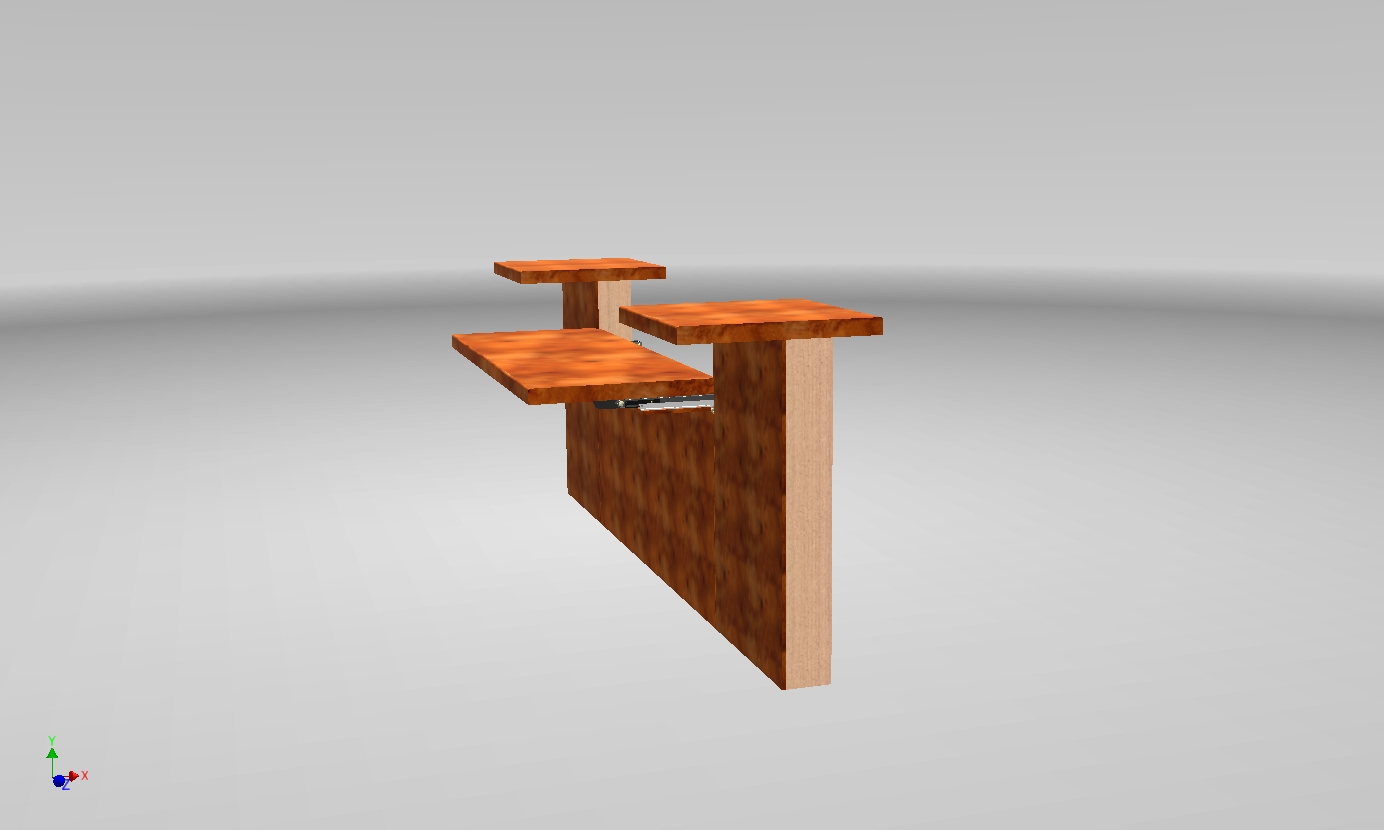Steve, note you have referred to ADAAG cites.
See below for ADAS specifics, in particular "forward approach" requirement and distinction between dining and work surfaces vs tables and counter heights.
Bar/Dining Surfaces – ADAAG vs ADAS
1108.2.9.1 Dining surfaces. Where dining surfaces for the consumption of food or drink are provided, at least 5 percent, but not less than one, of the dining surfaces for the seating and standing spaces shall be accessible and
be distributed throughout the facility and
located on a level accessed by an accessible route.
902 Dining Surfaces and Work Surfaces
902.1 General. Dining surfaces and work surfaces shall comply with 902.2 and 902.3. EXCEPTION: Dining surfaces and work surfaces for children’s use shall be permitted to comply with 902.4.
902.2 Clear Floor or Ground Space. A clear floor space complying with 305 positioned for a forward approach shall be provided. Knee and toe clearance complying with 306 shall be provided.
902.3 Height. The tops of dining surfaces and work surfaces shall be 28 inches (710 mm) minimum and 34 inches (865 mm) maximum above the finish floor or ground.
902.4 Dining Surfaces and Work Surfaces for Children’s Use. Accessible dining surfaces and work surfaces for children’s use shall comply with 902.4. EXCEPTION: Dining surfaces and work surfaces that are used primarily by children 5 years and younger shall not be required to comply with 902.4 where a clear floor or ground space complying with 305 positioned for a parallel approach is provided.
902.4.1 Clear Floor or Ground Space. A clear floor space complying with 305 positioned for forward approach shall be provided. Knee and toe clearance complying with 306 shall be provided, except that knee clearance 24 inches (610 mm) minimum above the finish floor or ground shall be permitted.
902.4.2 Height. The tops of tables and counters shall be 26 inches (660 mm) minimum and 30 inches (760 mm) maximum above the finish floor or ground.
1108.2.1 Services. If a service or facility is provided in an area that is not accessible, the same service or facility shall be provided on an accessible level and shall be accessible.
09 Commentary...The entire dining or drinking area must be accessible. In addition, 5 percent of the total spaces at dining surfaces provided must be accessible. Each seating location at a table or seat section of a bar is considered a dining surface.
The issue of whether a portion of a bar or dining counter in a restaurant is required to be accessible is subjective. The assumption is that if other types of seating are provided adjacent to the counter, then services provided at the counter will also be available at the adjacent seating; therefore, if adequate accessible seating is available adjacent to the bar area, the bar is not required to be lowered. If the bar is the only eating or dining surface in a restaurant or in a separate room in the restaurant, then a portion of the bar must be made accessible.

